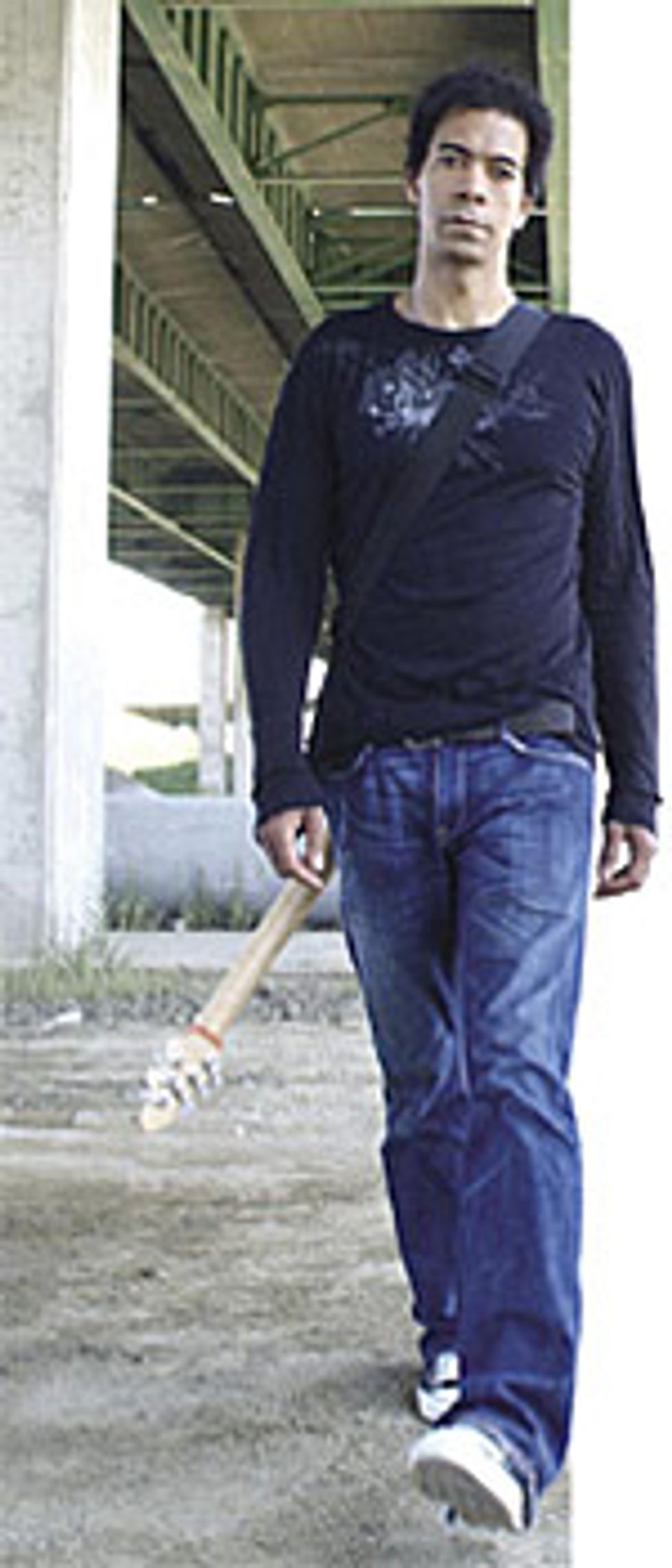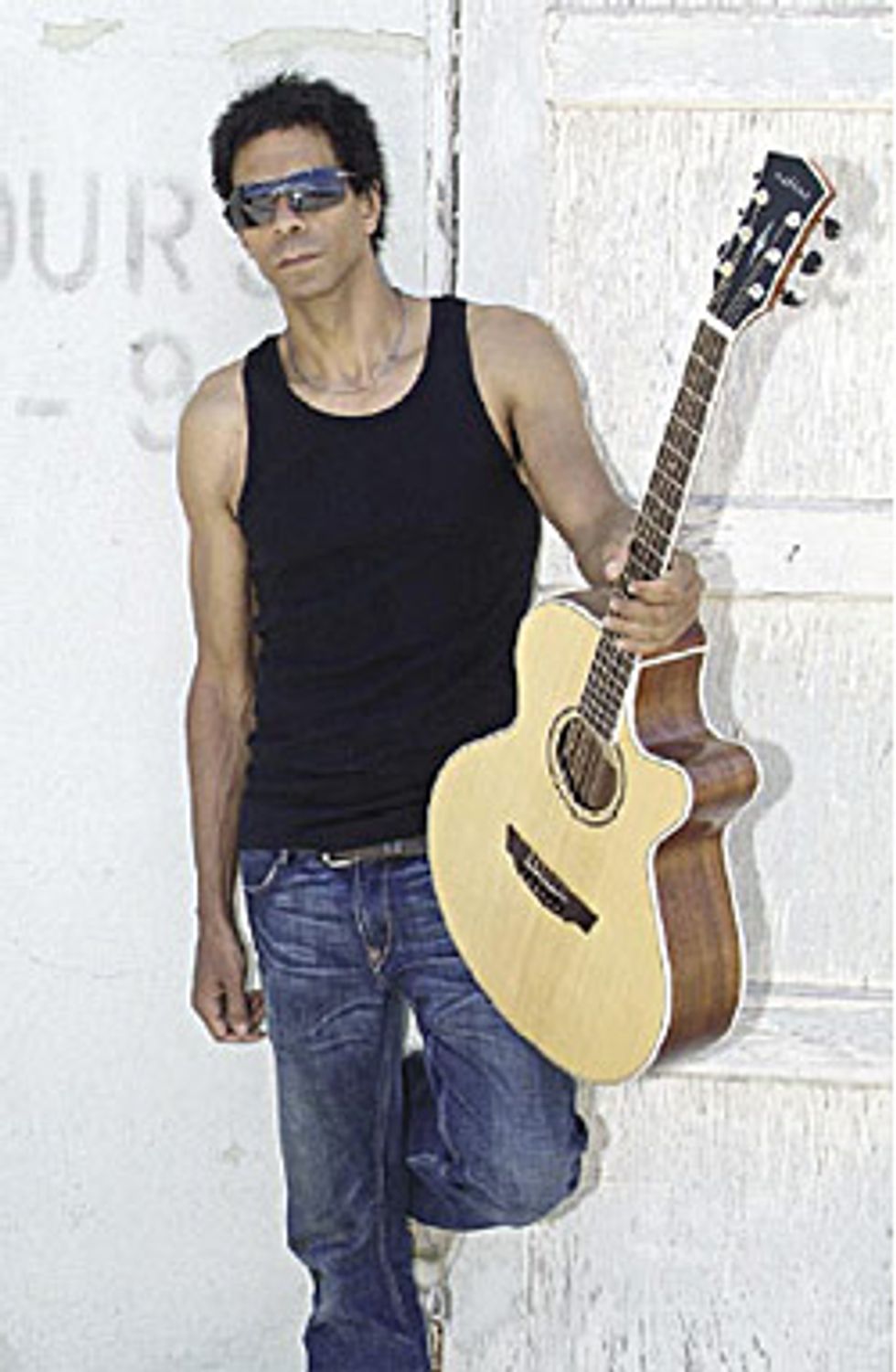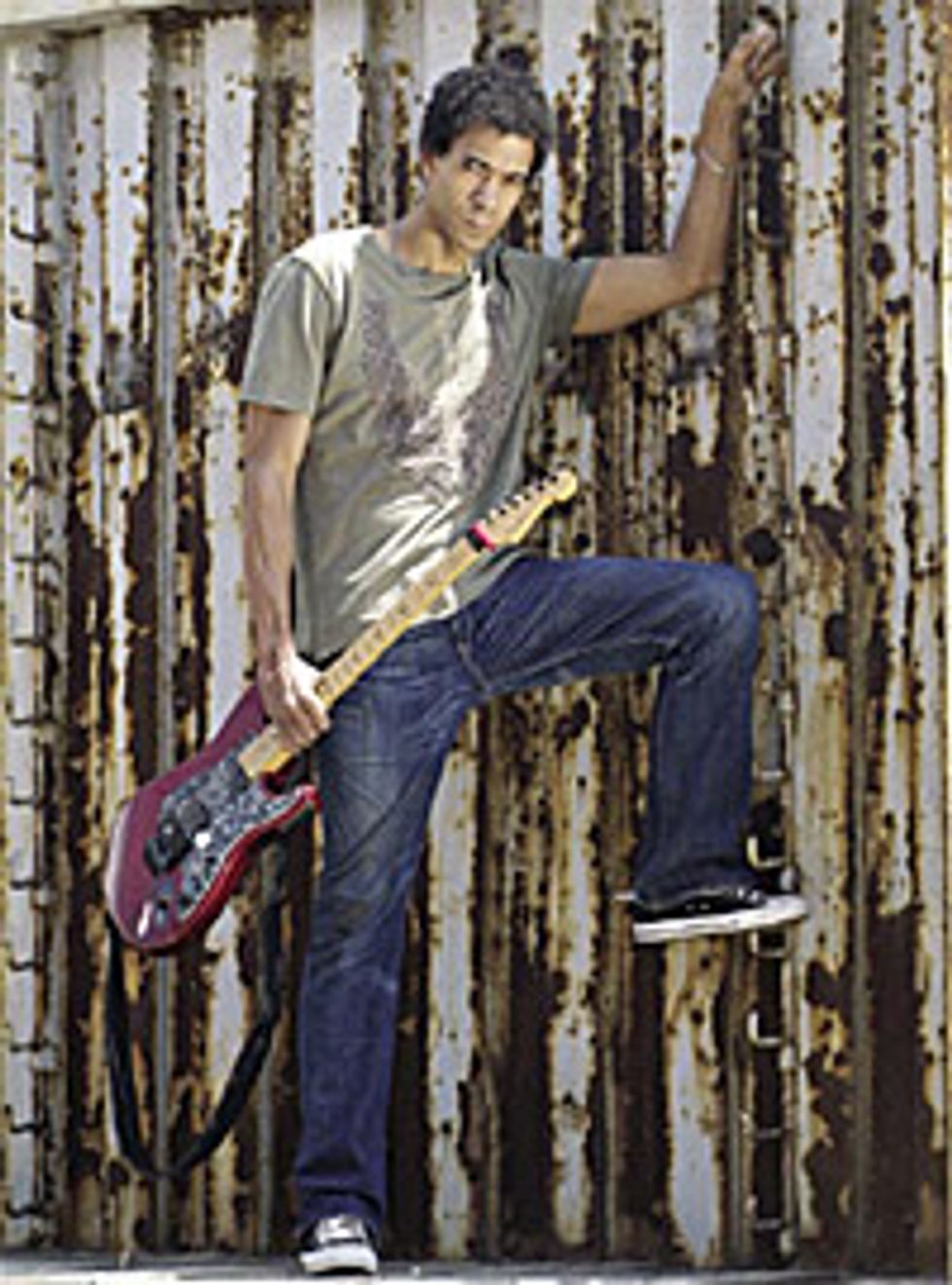 |
|
When you started playing guitar, what kind of sounds were you hearing that influenced your tone?
When I first started playing seriously as a young teenager, I was trying to emulate a lot of the rock guitar players that I heard. The main guy of course was Eddie Van Halen. Back then, I really didn’t understand the difference between tone and a characteristic sound. I thought that as long as I could get a guitar to sustain and have a lot of distortion, I would have the sound of Black Sabbath or Van Halen, even though that’s not the case at all. To my ears back then, that was the case.
When I would walk into music stores as a young kid I never understood why people would plug into those big Marshalls, because they wouldn’t distort unless they were cranked way up. I’d always plug into little solid state practice amps that had tons of gain at the front end and do a bunch of crazy licks. As I got older and more sophisticated, my ears started to understand tone better. I started to realize that there’s a big difference between getting sustain and getting the feel of saturation in the front end of the amp. It really has to do with tone.
That’s when I started to experiment with buying old Marshalls and the Tom Scholz Power Soak. It enabled me to turn the amp way up. I basically put everything on ten and dropped the volume down. It was great; it was the perfect sound. To this day it’s still the perfect sound – it’s just really hard to do that without blowing up an amp every couple of months!
So you were going for your version of the Brown Sound.
Yeah, sustain with tone. After I understood that you could interact with a tube amplifier, it became all about trying to get the output stage to drive as hard as possible – a warm, sustained tone. I guess that’s the Brown Sound, basically any instrument that sounds good like a piano or a saxophone.
| “Yeah, sustain with tone. After I understood that you could interact with a tube amplifier, it became all about trying to get the output stage to drive as hard as possible – a warm, sustained tone. I guess that’s the Brown Sound...” |
 When I first saw you back in the ‘80s, you were endorsing Fender amps.
When I first saw you back in the ‘80s, you were endorsing Fender amps. Those were red knob reissues of the Dual Showman. I still have a few of those. They’re really cool amps. I know Robben Ford plays those and there are a couple of other people who swear by those amps. There’s a Fender twang to those amps that’s really kind of cool.
I had mine slightly modified in the front end. The thing I like the most about Marshall amps is that the bottom end is so tight and it never falls apart. You never get that roly-poly, squishy sound – the bottom end is very distinct. I wanted that in the Dual Showmans, but they didn’t have it so my friend tweaked some stuff out and messed around with the gain stage a little bit. It had a little bit more gain, and gain that was a little different than what came stock with that amp. He also helped with that low frequency modification.
Those amps ended up sounding like hybrids of a Fender Twin and an early Marshall with more gain. Most of my albums have been recorded with a Dual Showman. They’re cool amps, and 90% of the time I only ran a Tube Screamer in front of them. I didn’t do much else; most of my setups have been fairly simple.
I think of your sound as being “liquid.” The neck position of a Strat comes to mind as opposed to a harsh bridge position humbucker sound.
It does come across that way. I have a tendency to sound darker live than I sound on my CDs, but I like a lot of clarity and distinction between the notes. What I’m going for is the warmth. I’m still on my quest to find the perfect tone – there are different characteristics of different tones that I like and I’m trying to figure out a way to get them all together. It’s very difficult.
When I have the amount of gain that I like in order to feel really comfortable doing what I do, I sacrifice certain dynamic qualities that come with going straight into a cool amp. Without having as much gain, the amp becomes a lot more sensitive to nuances. The more gain there is, the less of those dynamic intricacies there are. I want to have those without giving up too much luxury of feel.
Another thing I like is the clarity and separation that comes with amps and pickups that are considered brighter, but I don’t necessarily like the brightness of them. An example of a tone that I think is cool is Eric Johnson’s. It’s kind of dark, yet there’s a lot of attack on the front end. The attack is actually not like a Marshall attack; it’s kind of wide and has duration. It’s not just a smack, as the actual attack has its own tone – but a lot of that comes from his playing. Of all the players I like to listen to, that tone is one of my favorites. It has warmth, but it still has the clarity that keeps it sounding up front.
I don’t really play the neck position that much – usually I’m playing the bridge. I notice that a lot of guys who play the neck position often have their notes run together a little bit.
 They get lost in the frequencies of the bass drum and the bass.
They get lost in the frequencies of the bass drum and the bass. Absolutely. It sounds good isolated but it doesn’t cut. I like it to cut. The amps I’ve been using with a lot success are these Cornford amps. They have an old Marshall Class A sound, but with a lot more gain in the front end. They respond like a nonmaster volume Marshall. I love that feel.
When you hear me play, about 90% of the time the amp is really loud and I have some kind of attenuator to keep it from blasting the room apart. Either that or I have a low wattage amp that’s cranked way up and is not too loud.
Are there any pickups you keep coming back to?
For years I used a prototype model from DiMarzio. It’s an interesting pickup that was designed for this guy named Sonny. I think the story goes that he had some kind of guitar that he really liked but it sounded thin. He didn’t want to give up the guitar so he needed a pickup that was going to help it sound better. The pickup is very warm in the low mids and there’s a lot of that sizzle stuff rolled off, which I don’t care for anyway.
It’s a bridge pickup in the medium to high output range and I’ve been using that for years. I’ve been talking to Steve Blucher at DiMarzio a lot, and now that I’m playing the Peavey HP Special I want to try some different things.
What’s the Peavey like?
This guitar is a little bit different than the types of guitars that I’ve been playing. It’s a little bit less solid-bodyish, with a more chambered kind of feel to it. It’s a really nice piece of wood and it’s a little bit thicker. It just rings more. It’s a different kind of guitar; the notes don’t sound as dense and they’re not quite as focused sounding. There’s something about the warmth that comes with notes that might not be quite so focused. This guitar has a little bit of that and offers a quality that would come with a chambered body. The contrast is kind of nice.
| Greg’s Gearbox When it’s time to plug in, this is what he’s reaching for.
|
Accessories
Greg Howegreghowe.com






![Rig Rundown: Russian Circles’ Mike Sullivan [2025]](https://www.premierguitar.com/media-library/youtube.jpg?id=62303631&width=1245&height=700&quality=70&coordinates=0%2C0%2C0%2C0)






















![Rig Rundown: AFI [2025]](https://www.premierguitar.com/media-library/youtube.jpg?id=62064741&width=1245&height=700&quality=70&coordinates=0%2C0%2C0%2C0)




















 Zach loves his Sovtek Mig 60 head, which he plays through a cab he built himself at a pipe-organ shop in Denver. Every glue joint is lined with thin leather for maximum air tightness, and it’s stocked with Celestion G12M Greenback speakers.
Zach loves his Sovtek Mig 60 head, which he plays through a cab he built himself at a pipe-organ shop in Denver. Every glue joint is lined with thin leather for maximum air tightness, and it’s stocked with Celestion G12M Greenback speakers.











